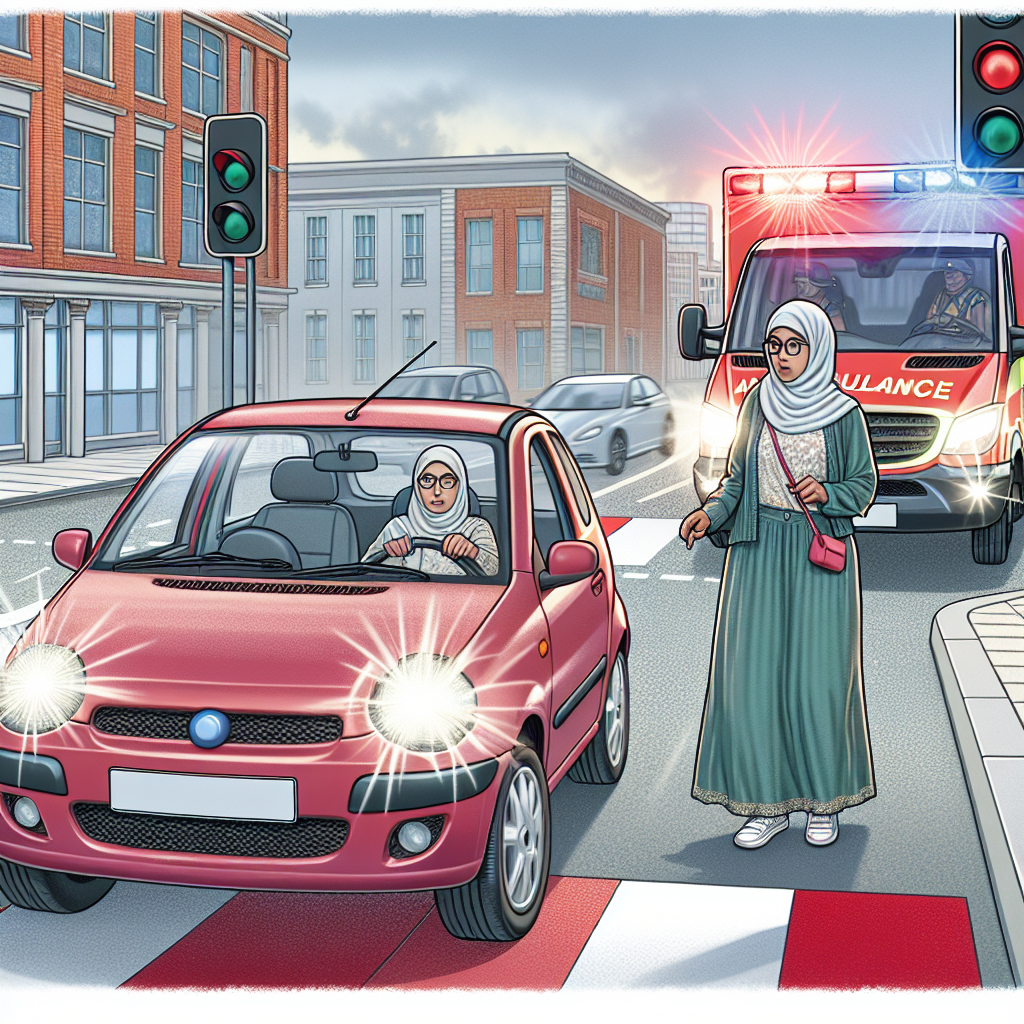-
Table of Contents
- What to do when you are in front of a first responder vehicle with their sirens on
- Introduction
- Understanding the Importance of Responding Correctly
- Stay Calm and Assess the Situation
- Reacting to the Emergency Vehicle
- 1. Pull Over Safely
- 2. Create Space
- 3. Do Not Tailgate
- 4. Yield at Intersections
- 5. Be Predictable
- Understanding the Law
- 1. Move Over Laws
- 2. Penalties for Non-Compliance
- Real-Life Examples
- Example 1: The Consequences of Delay
- Example 2: The Impact of Move Over Laws
- Conclusion
What to do when you are in front of a first responder vehicle with their sirens on

Introduction
Encountering a first responder vehicle with their sirens blaring can be a stressful situation for any driver. It is crucial to know how to react appropriately to ensure the safety of both yourself and the emergency personnel. In this article, we will discuss the necessary steps to take when you find yourself in front of a first responder vehicle with their sirens on.
Understanding the Importance of Responding Correctly
Before diving into the specific actions to take, it is essential to understand why it is crucial to respond correctly when encountering a first responder vehicle with their sirens on. The primary goal is to allow the emergency vehicle to reach its destination as quickly and safely as possible. Delaying their progress can have severe consequences, potentially impacting someone’s life or property.
Stay Calm and Assess the Situation
When you hear the sirens of a first responder vehicle approaching, it is essential to remain calm and assess the situation quickly. Follow these steps:
- Stay calm and avoid panicking.
- Check your surroundings for any potential hazards or obstacles.
- Identify the direction from which the emergency vehicle is approaching.
Reacting to the Emergency Vehicle
Once you have assessed the situation, it is time to react appropriately to ensure the smooth passage of the emergency vehicle. Follow these guidelines:
1. Pull Over Safely
When you notice the emergency vehicle approaching from behind, safely move your vehicle to the right side of the road and come to a complete stop. Make sure to signal your intentions to other drivers by using your turn signal. Avoid sudden movements or braking, as this can cause accidents.
2. Create Space
If you are in an intersection or a situation where you cannot immediately pull over, it is crucial to create space for the emergency vehicle to pass. Slow down and cautiously proceed through the intersection, ensuring that you do not block the path of the emergency vehicle.
3. Do Not Tailgate
While it may be tempting to follow closely behind the emergency vehicle to clear traffic, it is essential to maintain a safe distance. Tailgating can hinder the emergency vehicle’s movement and compromise the safety of both yourself and the responders.
4. Yield at Intersections
When approaching an intersection, always yield the right of way to the emergency vehicle. Even if you have a green light or the right of way, it is crucial to allow the emergency vehicle to pass first. This ensures that they can navigate through the intersection quickly and safely.
5. Be Predictable
When driving near an emergency vehicle, it is important to be predictable in your actions. Avoid sudden lane changes or erratic driving behavior, as this can confuse other drivers and potentially cause accidents. Maintain a steady speed and follow the rules of the road.
Understanding the Law
Understanding the laws regarding first responder vehicles can help you react appropriately in these situations. Here are some key points to keep in mind:
1. Move Over Laws
Many jurisdictions have “Move Over” laws that require drivers to move to the right and yield to emergency vehicles. These laws are in place to ensure the safety of both the emergency responders and other drivers on the road. Familiarize yourself with the specific laws in your area to ensure compliance.
2. Penalties for Non-Compliance
Failure to yield to an emergency vehicle can result in severe penalties, including fines, points on your driving record, and even license suspension. It is essential to prioritize the safety of everyone on the road and comply with the law.
Real-Life Examples
Let’s take a look at a couple of real-life examples that highlight the importance of reacting correctly when encountering a first responder vehicle:
Example 1: The Consequences of Delay
In 2018, a tragic incident occurred in a city where a driver failed to yield to an ambulance with its sirens on. The delay caused by the driver’s actions resulted in the ambulance arriving too late to save a critically injured patient. This unfortunate event emphasizes the importance of promptly reacting and yielding to emergency vehicles.
Example 2: The Impact of Move Over Laws
Several states in the United States have implemented Move Over laws, and the impact has been significant. According to statistics from the National Highway Traffic Safety Administration (NHTSA), states with Move Over laws have seen a reduction in accidents involving emergency vehicles. This demonstrates the effectiveness of such laws in ensuring the safety of both emergency responders and other drivers.
Conclusion
Encountering a first responder vehicle with their sirens on can be a stressful situation, but it is crucial to react correctly to ensure the safety of everyone involved. By staying calm, pulling over safely, creating space, and following the law, you can help emergency vehicles reach their destinations quickly and efficiently. Remember, your actions can make a significant difference in saving lives and protecting property.



